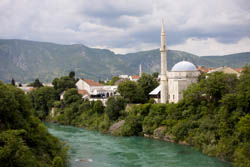Rebuilding heritage and identity after war
From historical buildings and archaeological sites to monuments and museums, cultural heritage plays a pivotal role in rebuilding a region's or nation's identity after a war. The EU-funded project 'Identity and conflict. Cultural heritage and the Re-construction of Identities after Conflict.' (CRIC) investigated the reconstruction of such sites to strengthen communities and identities. It aimed to develop policies and practices that would help the reconstruction process, considering as well the social and psychological components involved. Building on case studies of conflicts in Bosnia, Cyprus, France, Germany and Spain, the project collected data to understand the complex roles that heritage plays in rebuilding societies. Through fieldwork, comparisons and intensive analyses, it investigated 'Biographies of place' or how a locale can change perceptions and meanings. Another important study involved 'Memorials and memorialisation', debating the public capturing of memories and how this affects the reiterations of history. In parallel, the project team examined 'Post-conflict landscapes', focusing on the construction of memories and how this ties to emotions, claims and meanings between spaces and contexts. Over the long term, CRIC could have a profound impact on shaping debate regarding post-war reconstruction and in helping to overcome the consequences of conflict. In this respect, the project team recommended that reconstruction policies be tailored to each specific case rather than building generic policies for all conflict areas. The project's results were effectively disseminated through various online portals, articles and direct engagement with the public. Valuable messages were also highlighted through 17 films on the topic, which were uploaded to the Internet. These efforts represent an important step in coming to terms with the past and healing some of its scars.



